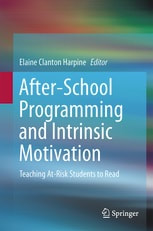
Let’s first define terms:
Whole language is a teaching method that emphasizes recognizing whole words.
Phonics is a method of teaching reading that group’s letter sounds together and teaches rules that predict when these sounds will appear in a word.
Blended literacy may combine whole language and phonics teaching techniques, and/or it may also involve incorporating technology.
Cueing is a system of three techniques taught to children to help them interpret word meanings.
As you may have already guessed, each of these teaching methods has many different definitions and many different teaching approaches; unfortunately, each of these teaching methods is still in use in the classroom even though they have all been proven to be ineffective. That is why as we look at our 20 reasons for reading failure, we will examine each of these teaching methods in detail.
For now, I simply quote Dr. Sally Shaywitz (see Shaywitz, Overcoming Dyslexia, 2003) she explains the problem best, “Children do not learn to read by memorizing a word list. Most children, especially those who struggle in reading, do not learn to read by memorizing phonics rules” (p. 78).
Dr. G. Reid Lyon, former Chief of the Child Development and Behavior Branch within the National Institute of Child Health and Human Development (NICHD), said in 1997 when he testified before Congress, the primary reason so many children were failing to learn to read was the methods with which we teach reading (Lyon, 1998). It was true in 1997, and unfortunately it is still true today. The teaching methods that we use to teach reading in the classroom are the primary reason that reading scores have dropped in 2019 and that so many children are failing to learn to read.
Yes, students who are presently failing can be taught to read. We have proof. Neuroimaging research clearly shows that at-risk students, who have previously failed in reading, can be taught to read (Keller & Just, 2009). The neuroimaging study by Keller and Just (2009) showed at-risk children improving in reading. It’s not the students. It’s not even the teachers. The reason that we are failing to teach children to read is the teaching method(s) that we are using to teach reading (Foorman et al., 2015). It’s time for a change.
At my Reading Orienteering Club program this fall, we had two students move up two grade levels in reading after only 48 hours of instruction. Yes, we can teach children to read, even children who have failed for multiple years (see my blog post from 4/12/19). Unfortunately, we refuse to change our teaching methods.
 RSS Feed
RSS Feed
